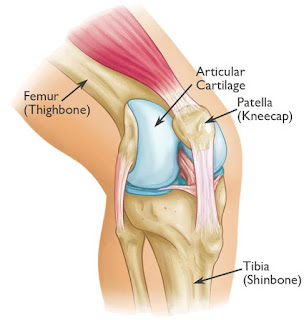Sever’s Disease(Calcaneal Apophysitis)
Sever’s Disease(Calcaneal Apophysitis)
INTRODUCTION:
In the case of Sever’s disease though, your child’s growth spurt can lead to serious pain. It’s not actually a
disease but a heel injury. It
is named after James Warren Sever (1878–1964), an American Orthopedic
doctor, who characterized it in 1912.
CAUSES:
During
a growth spurt, your child’s heel bone grows faster than the muscles, tendons,
and ligaments in his/ her leg. In fact, the heel is one of your child’s first body
parts to reach full adult size. When the muscles and tendons can’t grow fast
enough to keep up, they are stretched too tight.
If your child is very active, especially if he/she
plays a sport that involves a lot of running and jumping on hard surfaces (such
as soccer, basketball, or gymnastics), it can put extra strain on his/her already
overstretched tendons. This leads to swelling and pain at the point where the
tendons attach to the growing part of his/her heel.
SIGNS
AND SYMPTOMS:
Sever’s disease is more common in boys. They tend to have
later growth spurts and typically get the condition between the ages of 10 and
15. In girls, it usually happens between 8 and 13.
Symptoms can include:
- Pain, swelling, or redness in one or both heels
- Tenderness and tightness in the back of the heel
that feels worse when the area is squeezed
- Heel pain that gets worse after running or jumping,
and feels better after rest. The pain may be especially bad at the
beginning of a sports season or when wearing hard, stiff shoes like soccer
cleats.
- Trouble walking
- Walking or running with a limp or on tip toe
DIAGNOSTIC
METHODS:
- · X-Ray
X-ray of the foot of a 11 year old boy, showing sclerosis
and fragmentation of the calcaneal
apophysis.
Labeled
MRI depicts the anatomy and mechanical forces responsible for the development
of Sever disease (shear stress at the calcaneal apophysis).
TREATMENT:
The good news is that the condition doesn’t cause any
long-term foot problems.
Symptoms typically go away after a few months ONLY after proper treatment.
The best treatment is simply rest. Your child will need
to stop or cut down on sports until the pain gets better. When he/she's well
enough to return to her sport, have his/her build up his/her playing time gradually.
- Ice packs or non-steroidal anti-inflammatory drugs (NSAIDs), such as ibuprofen , to relieve the pain
- Supportive shoes and inserts that reduce stress on the heel bone. These can
help if your child has another foot problem that aggravates Sever’s
disease, such as flat feet or high arches.
- Stretching and strengthening exercises,
perhaps with the help of a physical therapist
- In severe cases, your child may need a cast so his/her heel is forced to rest.
How to Prevent SEVER’S DISEASE:
Once your child’s growth spurt ends, and she's reached
full size, her Sever’s disease won’t return. Until then, the condition can
happen again if your child stays very active.
Some simple steps can help prevent it. Have your child:
- Wear supportive, shock-absorbing shoes.
- Stretch his/her calves , heels, and hamstrings.
- Not overdo it. Warn against over-training, and
suggest plenty of rest, especially if he/she begins to feel pain in his/her heel
- Try to avoid lots of running and pounding on hard
surfaces.
- If he/she is over-weight, help to lose those extra
pounds.
----THE END----






ji good wrk all de best
ReplyDeleteVery good work thambi...
ReplyDeleteThanks for this information about Severs Disease. Sever's disease can common cause heel pain in some children. Yeah, this common condition can be very painful. Thanks for sharing this post with us!
ReplyDeleteRegards,
Kids Insoles Store
https://kidsole.com/